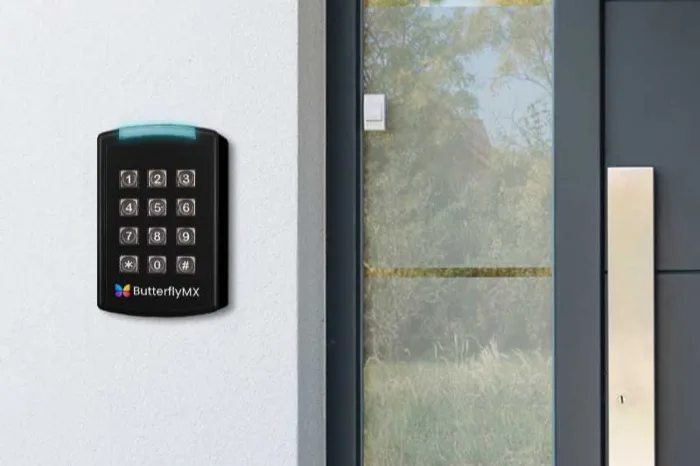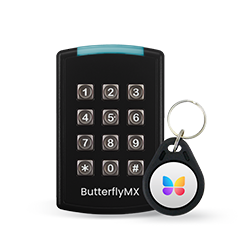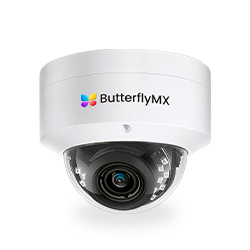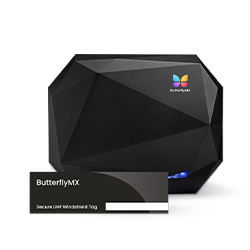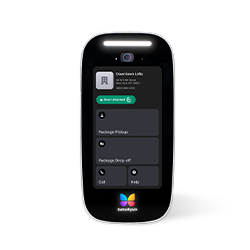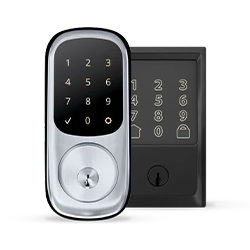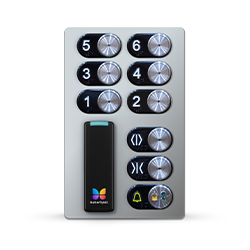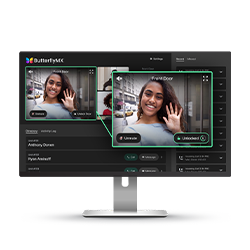Key takeaways
- A commercial keypad access control system offers secure, code-based entry that eliminates the need for physical keys.
- Commercial keypads are ideal for offices, warehouses, and mixed-use properties.
- Integration with other access control devices provides a comprehensive security framework for your property.
- Regular code updates and activity monitoring help maintain long-term security.
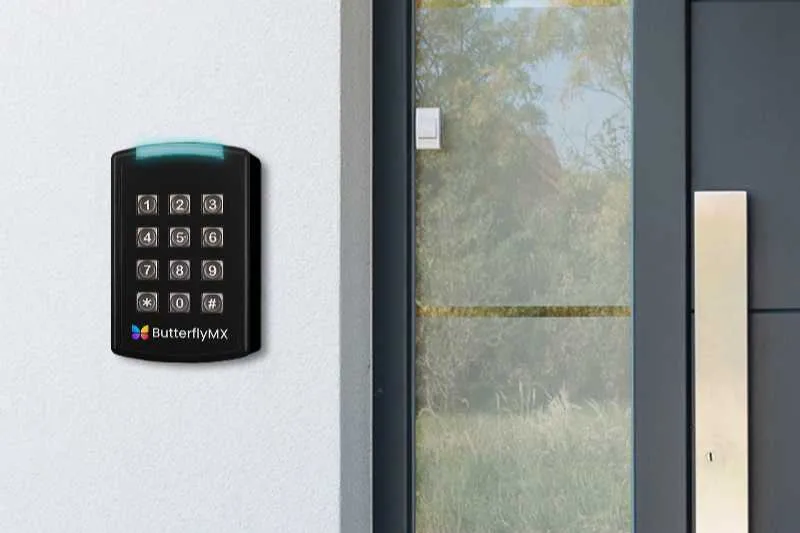
Modern commercial buildings rely on technology to secure doors, control entry, and monitor activity. A commercial keypad access control system is an efficient and secure commercial access control method of managing who can access your property without physical keys or cards.
By assigning unique PINs or codes to authorized users, you can enhance accountability and eliminate key management challenges. Whether you manage an office, industrial space, or a mixed-use property, keypad systems deliver controlled access and simplified maintenance.
In this post, you’ll discover what a commercial keypad access control system is, how it works, and how it can benefit your business and make your operations more efficient.
Navigate this post:
- What is a commercial keypad access control system?
- How does a door access control system with a keypad work?
- Commercial keypad access control system use cases
- Benefits of a commercial keypad system
- Comparing commercial keypads, card access, and biometric systems
- The ButterflyMX Access Control System: A robust option for commercial properties
More than 40K, 5-star reviews!
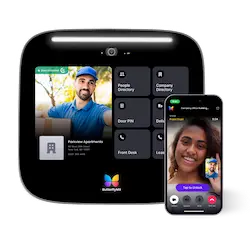
Video Intercoms
Open doors, gates & garages from anywhere.
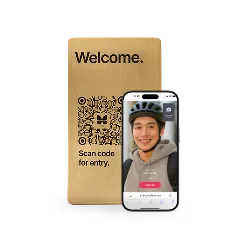
QR Code Intercom
Smartphone-based visitor access.
Access Control
Fob, key cards, PINs, and mobile apps.
Security Cameras
Visibility throughout your property.
Vehicle Access
Hands-free access for gates & garages.
Package Room
Receive, store, and manage deliveries.
Smart Locks
Connect to all major brands and models.
Elevator Controls
Unlock key-fobbed elevators for anyone.
Front Desk Station
See all your doors and cameras in one place.
What is a commercial keypad access control system?
A commercial keypad access control system is an electronic access control device that lets users input a PIN to access your building. Unlike mechanical locks, keypad systems operate through digital verification, allowing easy updates to user credentials and access schedules.
They often connect to commercial access control systems, which manage multiple doors and record access events with time-and-date-stamped audit logs. This setup helps you monitor who enters each area while maintaining flexibility to adapt permissions as staff or tenants change.
How does a door access control system with a keypad work?
A door access control system with a keypad combines hardware and software components to regulate who can enter specific areas of your property. Each element works together to create a secure and efficient process that manages access while keeping records of every entry attempt.
A door access control system with a keypad works through:
- Authentication. First, the user enters a code on a keypad, swipes a keycard, scans a keyfob, or presents another approved credential. Authentication is the first step that identifies the person trying to enter. By using distinct credentials for each individual, you ensure that only verified users can proceed to the next stage.
- Verification. Once a credential is presented, the system compares it against stored data within the access control software. If the input matches an active record, authorization is granted and the door unlocks. If not, access is denied, and the attempt is recorded. This verification step provides the security backbone of the system, ensuring that only recognized users can enter protected areas.
- Entry logging. Every access event, successful or denied, is automatically logged. This recordkeeping allows administrators to track who entered, when, and at which door. Over time, these logs provide valuable insights into building traffic and can help identify unusual or suspicious activity. They also support compliance requirements by maintaining an auditable trail of access attempts.
Commercial keypad access control system use cases
A commercial keypad access control system works well in many business environments. It provides a combination of convenience and security that helps you control access by monitoring who enters and exits.
Keypad systems are especially useful in industries that require frequent entry for staff, tenants, or visitors, but also need to track access for safety, compliance, or operational reasons.
Here are six commercial keypad use cases:
- Office buildings
- Warehouses and industrial facilities
- Multi-tenant properties
- Healthcare and research facilities
- Educational institutions
- Mixed-use properties
1. Office buildings
In office buildings, an access control system with a commercial keypad allows you to create flexible access schedules for different groups of users. You can provide employees with codes that work during business hours while granting cleaning or maintenance staff temporary codes that expire after a certain time.
This reduces the need to distribute and track physical keys and helps you keep daily operations organized. You can also monitor entry activity across multiple doors and identify patterns that improve workflow and building security.
2. Warehouses and industrial facilities
Warehouses and industrial facilities often have high volumes of traffic with many workers, contractors, and delivery personnel needing access. A keypad system lets you control who can enter specific areas, such as inventory storage, mechanical rooms, or loading docks.
By assigning time-limited codes, you can ensure that temporary staff or delivery personnel only have access during the required hours. This protects sensitive areas while maintaining smooth operational flow. Logging every entry also allows you to review activity for safety and accountability.
3. Multi-tenant properties
If you manage multi-tenant buildings, a commercial keypad access control system gives each tenant a unique code for entry. This removes the need to distribute physical keys and allows you to easily update or revoke access when tenants move out.
You can also assign different levels of access for shared spaces, such as fitness centers, mailrooms, or parking areas. This helps you maintain security across the property while providing tenants with convenient, independent access.
4. Healthcare and research facilities
Healthcare and research facilities have strict security requirements for restricted areas such as labs, storage rooms, and medication cabinets. Keypad-based access ensures that only authorized staff can enter these zones. You can assign unique codes to individuals and revoke access immediately if personnel change.
In addition, detailed access logs help maintain compliance with regulatory standards and provide accountability for sensitive materials or patient information. Keypads also reduce the risk of lost keys or shared credentials, enhancing overall security.
5. Educational institutions
Schools, colleges, and universities use commercial keypads to secure classrooms, laboratories, administrative offices, and dormitories. By updating codes each semester or academic year, you can maintain control even as students and staff change.
Keypads allow you to set access permissions by role, such as faculty, maintenance staff, or student groups. This ensures that only approved individuals can enter designated areas, improving safety and protecting property while simplifying access management for administrators.
6. Mixed-use properties
Mixed-use properties, which combine residential, retail, and office spaces, benefit greatly from commercial keypad access control systems. These properties experience a constant flow of residents, employees, delivery drivers, and customers — all requiring different levels of access. A keypad system provides flexible access control that can be customized for each group.
For example, residents may receive permanent entry codes for their units and shared amenities, while retail tenants or office workers can use time-restricted codes that only work during business hours.
Discover how ButterflyMX works:
Benefits of a commercial keypad system
A commercial keypad system provides advantages that go far beyond simple door security. By using a keypad, you gain control, flexibility, and oversight that help you manage access efficiently while reducing administrative burden. These systems make it easier to protect your property, monitor activity, and adjust permissions as your needs change.
Key benefits of a commercial keypad access control system include:
Customizable access
With a commercial keypad system, you can assign unique codes to individual users or specific groups. This allows you to control exactly who can enter each area of your property. For example, you can provide employees with codes that only work during certain hours or grant temporary access to contractors. By customizing access levels, you maintain security while giving authorized personnel the freedom to move where they need to go.
Reduced maintenance
A keypad system removes the need for physical keys, which reduces the risk of lost, stolen, or duplicated keys. As a result, you no longer have to rekey doors or manage large sets of keys when staff or tenants change. This simplifies property management and lowers maintenance costs, allowing you to focus on operations instead of constantly replacing or tracking keys.
Access tracking
Every entry through a keypad is logged automatically, creating a detailed record of building activity. You can review these logs to track who accessed specific areas and when. This information is valuable for audits, compliance reporting, and investigating unusual activity. By keeping accurate records, you increase accountability and strengthen overall security for your property.
Adaptability
Commercial keypad systems are versatile and can be installed across a variety of entry points. You can secure office doors, storage rooms, exterior gates, or any area that requires controlled access. Because they work in different settings, keypad access control systems are suitable for properties of all sizes and types, providing consistent security without complicated setup.
Ease of management
Managing access with a keypad system is simple and convenient. You can quickly add, change, or revoke user codes without professional assistance or specialized tools. This allows you to respond immediately to personnel changes, temporary visitors, or security concerns. The intuitive management interface saves time and ensures your property remains secure while adapting to changing access needs.
Comparing commercial keypads, card access, and biometric systems
When selecting a door access control system, it is important to understand how different options compare. Each type of system offers unique advantages depending on your security needs, budget, and the number of users who need access.
The ButterflyMX Access Control System: A robust option for commercial properties
When you evaluate access control solutions for commercial properties, the ButterflyMX Access Control System stands out as a robust and comprehensive option. Unlike traditional commercial keypad locks, which often operate as standalone devices, ButterflyMX integrates seamlessly into a cloud-based ecosystem designed for modern property management.
Here are the top reasons to invest in the ButterflyMX Access Control System for your property:
- Versatile access methods
- Cloud-based monitoring and remote management
- Easy installation and maintenance
Versatile access methods
One of the primary advantages of the ButterflyMX Access Control System is its versatility in access methods. You can allow tenants, staff, and visitors to unlock doors using a smartphone app, key cards, fobs, or a traditional PIN code through the ButterflyMX Keypad. This flexibility ensures that every user can access the property in the way that is most convenient for them. In addition, you can grant Visitor Passes to guests or service providers to use at the Keypad, offering convenience without compromising security.
Cloud-based monitoring and remote management
The Access Control System is cloud-based, which means all entry logs are stored securely online. You can monitor access in real time, audit activity, and gain valuable insights into building operations. Remote management capabilities allow you to update access permissions, review logs, and troubleshoot issues from anywhere. This reduces the need for on-site interventions and helps you maintain tight control over access across your property.
Easy installation and maintenance
Installing the ButterflyMX Access Control System is straightforward. You can integrate with existing door strikes that only require an internet connection and power supply. This minimizes disruption during installation and allows for quick deployment across multiple entry points. Additionally, ButterflyMX receives automatic software updates over the internet, ensuring that your access control remains current with the latest features and security enhancements without requiring manual effort.
Commercial keypad access control system FAQs
- Can I manage access codes remotely with a commercial keypad system?
- What types of doors and entry points are compatible with a commercial keypad system?
Can I manage access codes remotely with a commercial keypad system?
Yes, most modern commercial keypad systems allow you to manage access codes remotely through a cloud-based dashboard or mobile app. You can add, remove, or update codes instantly, grant temporary access to guests or contractors, and review entry logs without needing to be on site. This makes it easier to maintain security and respond quickly to changing personnel needs.
What types of doors and entry points are compatible with a commercial keypad system?
Commercial keypad systems are compatible with a wide variety of doors and entry points, including office doors, storage rooms, exterior entrances, and multi-tenant building access points. They can integratewith existing door strikes, electronic locks, and other access control devices, making them suitable for both new construction and retrofit projects.

Learn more about ButterflyMX
Fill in the form below, and we'll email you right back.
Have questions?
Fill in the form below, and we'll email you right back.
You’ll be redirected shortly...
